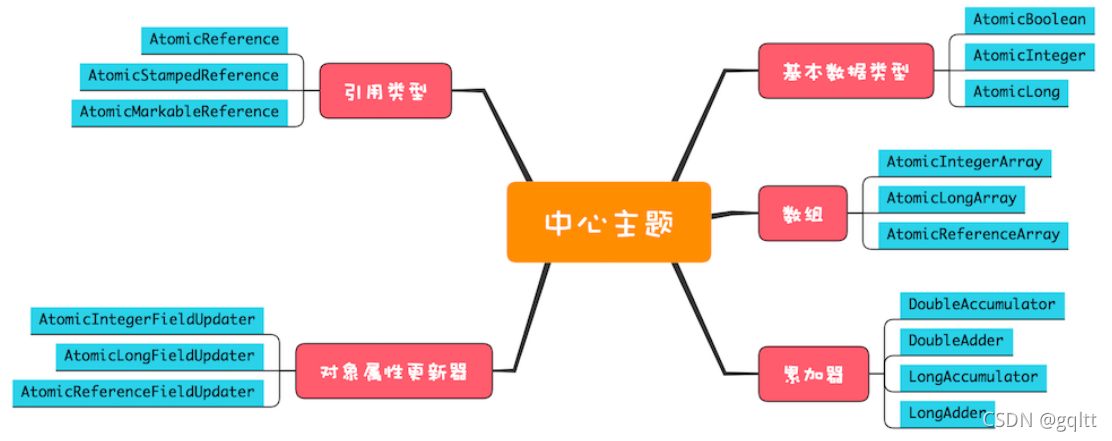对于简单的原子性问题,还有一种无锁方案,先看看如何利用原子类解决累加器问题。
public class Test {AtomicLong count = new AtomicLong(0);public void add10K() {int idx = 0;while(idx++ < 10000) {count.getAndIncrement();}}}无锁方案相对互斥锁方案,最大的好处就是性能。
无锁方案的实现原理
其实原子类性能高的秘密很简单,硬件支持而已。CPU 为了解决并发问题,提供了 CAS 指令(CAS,全称是 Compare And Swap,即“比较并交换”)。CAS 指令包含 3 个参数:共享变量的内存地址 A、用于比较的值 B 和共享变量的新值 C;并且只有当内存中地址 A 处的值等于 B 时,才能将内存中地址 A 处的值更新为新值 C。作为一条 CPU 指令,CAS 指令本身是能够保证原子性的。
你可以通过下面 CAS 指令的模拟代码来理解 CAS 的工作原理。在下面的模拟程序中有两个参数,一个是期望值 expect,另一个是需要写入的新值 newValue,只有当目前 count的值和期望值 expect 相等时,才会将 count 更新为 newValue。
class SimulatedCAS{int count;public synchronized int cas(int expect, int newValue){// 读目前 count 的值int curValue = count;// 比较目前 count 值是否 == 期望值if(curValue == expect){// 如果是,则更新 count 的值count = newValue;}// 返回写入前的值return curValue;}}使用 CAS 来解决并发问题,一般都会伴随着自旋,而所谓自旋,其实就是循环尝试。
class SimulatedCAS{volatile int count;// 实现 count+=1public void addOne(){do {newValue = count+1; //①}while(count != cas(count,newValue) //②}// 模拟实现 CAS,仅用来帮助理解public synchronized int cas(int expect, int newValue){// 读目前 count 的值int curValue = count;// 比较目前 count 值是否 == 期望值if(curValue == expect){// 如果是,则更新 count 的值count= newValue;}// 返回写入前的值return curValue;}
}但是在 CAS 方案中,有一个问题可能会常被你忽略,那就是ABA的问题。什么是 ABA 问题呢?
假设 count 原本是 A,线程 T1 在执行完代码①处之后,执行代码②处之前,有可能 count 被线程 T2 更新成了 B,之后又被 T3 更新回了 A,这样线程T1 虽然看到的一直是 A,但是其实已经被其他线程更新过了,这就是 ABA 问题。
Java 如何实现原子化的 count += 1
在 Java 1.8 版本中,getAndIncrement() 方法会转调 unsafe.getAndAddLong() 方法。这里 this 和 valueOffset 两个参数可以唯一确定共享变量的内存地址。
final long getAndIncrement() {return unsafe.getAndAddLong(this, valueOffset, 1L);
}unsafe.getAndAddLong() 方法的源码如下
public final long getAndAddLong(Object o, long offset, long delta){long v;do {// 读取内存中的值v = getLongVolatile(o, offset);} while (!compareAndSwapLong(o, offset, v, v + delta));return v;
}// 原子性地将变量更新为 x
// 条件是内存中的值等于 expected
// 更新成功则返回 true
native boolean compareAndSwapLong(Object o, long offset, long expected,long x);原子类概览

1. 原子化的基本数据类型
getAndIncrement() // 原子化 i++
getAndDecrement() // 原子化的 i--
incrementAndGet() // 原子化的 ++i
decrementAndGet() // 原子化的 --i
// 当前值 +=delta,返回 += 前的值
getAndAdd(delta)
// 当前值 +=delta,返回 += 后的值
addAndGet(delta)
//CAS 操作,返回是否成功
compareAndSet(expect, update)
// 以下四个方法
// 新值可以通过传入 func 函数来计算
getAndUpdate(func)
updateAndGet(func)
getAndAccumulate(x,func)
accumulateAndGet(x,func)

(精简))




(精简))





(精简))

)


![[导入]身份验证方面的问题](http://pic.xiahunao.cn/[导入]身份验证方面的问题)
